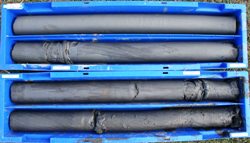
As well as land coring, there is contingency for a marine coring campaign to supplement the onshore studies. If initial results of the land boreholes are encouraging, the project will use expertise from another Fugro affiliate, namely Falmouth-based SeaCore. This company will provide a self-propelled barge to drill and core beneath the Gulf of Livadi and enable important calibration of the sediments detected by the project’s 2007 seismic reflection survey
3.
All being well, results of the new analyses should be available in late 2011, when it will become clearer whether the uncertainty concerning the site of ancient Ithaca has finally been laid to rest.